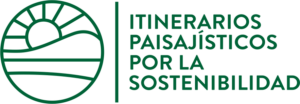The products of the region circulated along the Camino Real
The royal roads are so called because they belonged to the crown, although in the Canary Islands they depended on the island councils. They had to be seven metres wide, fenced off and zigzag across the slopes, but not all of them met these minimum requirements. Many were simple bridle paths, about two metres wide, on which two beasts of burden could barely cross.
The main products of the region were transported along the Camino Real, on the back of beasts or in carts pulled by cows, mules, donkeys and even camels. This was the case with tobacco, the cultivation of which spread through the fields of Granadilla at the end of the 19th century. This American plant brought by Christopher Columbus soon became naturalised on the islands, although it was not allowed to be grown freely until 1836.
A few metres from here is the Granadilla tobacco drying shed, built in 1878 by José García Torres, one of the most important tobacco growers in the region. Its strategic position next to the road facilitated the arrival of the raw material. At that time, a deep green covered the terraces and the aroma of tobacco filled the air near the drying shed.

Leave a Reply